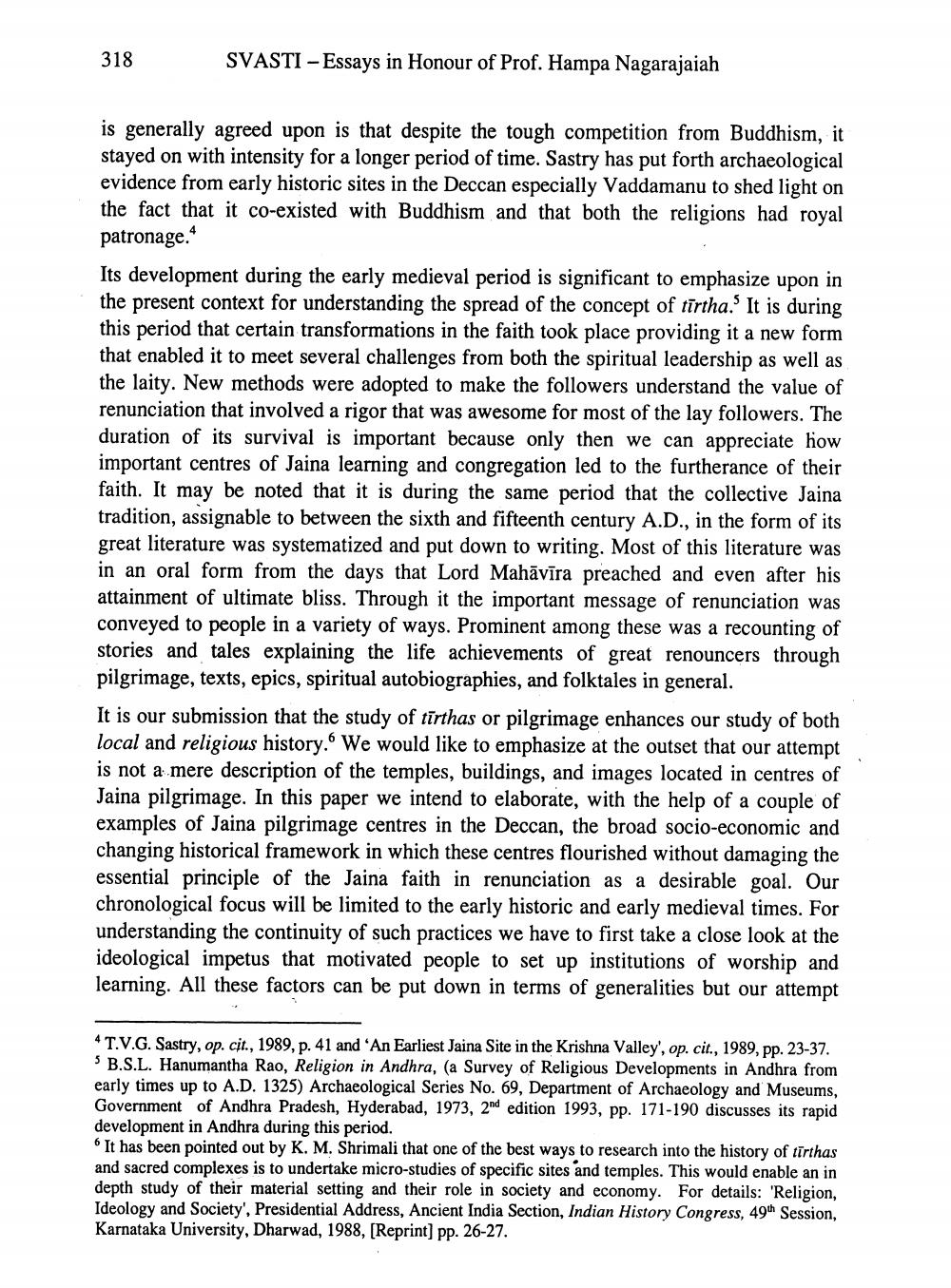________________
318
SVASTI – Essays in Honour of Prof. Hampa Nagarajaiah
is generally agreed upon is that despite the tough competition from Buddhism, it stayed on with intensity for a longer period of time. Sastry has put forth archaeological evidence from early historic sites in the Deccan especially Vaddamanu to shed light on the fact that it co-existed with Buddhism and that both the religions had royal patronage. Its development during the early medieval period is significant to emphasize upon in the present context for understanding the spread of the concept of tīrtha. It is during this period that certain transformations in the faith took place providing it a new form that enabled it to meet several challenges from both the spiritual leadership as well as the laity. New methods were adopted to make the followers understand the value of renunciation that involved a rigor that was awesome for most of the lay followers. The duration of its survival is important because only then we can appreciate how important centres of Jaina learning and congregation led to the furtherance of their faith. It may be noted that it is during the same period that the collective Jaina tradition, assignable to between the sixth and fifteenth century A.D., in the form of its great literature was systematized and put down to writing. Most of this literature was in an oral form from the days that Lord Mahāvīra preached and even after his attainment of ultimate bliss. Through it the important message of renunciation was conveyed to people in a variety of ways. Prominent among these was a recounting of stories and tales explaining the life achievements of great renouncers through pilgrimage, texts, epics, spiritual autobiographies, and folktales in general. It is our submission that the study of tīrthas or pilgrimage enhances our study of both local and religious history. We would like to emphasize at the outset that our attempt is not a mere description of the temples, buildings, and images located in centres of Jaina pilgrimage. In this paper we intend to elaborate, with the help of a couple of examples of Jaina pilgrimage centres in the Deccan, the broad socio-economic and changing historical framework in which these centres flourished without damaging the essential principle of the Jaina faith in renunciation as a desirable goal. Our chronological focus will be limited to the early historic and early medieval times. For understanding the continuity of such practices we have to first take a close look at the ideological impetus that motivated people to set up institutions of worship and learning. All these factors can be put down in terms of generalities but our attempt
4T.V.G. Sastry, op. cit., 1989, p. 41 and 'An Earliest Jaina Site in the Krishna Valley', op. cit., 1989, pp. 23-37. 5 B.S.L. Hanumantha Rao, Religion in Andhra, (a Survey of Religious Developments in Andhra from early times up to A.D. 1325) Archaeological Series No. 69, Department of Archaeology and Museums, Government of Andhra Pradesh, Hyderabad, 1973, 2nd edition 1993, pp. 171-190 discusses its rapid development in Andhra during this period. 6 It has been pointed out by K. M. Shrimali that one of the best ways to research into the history of tirthas and sacred complexes is to undertake micro-studies of specific sites and temples. This would enable an in depth study of their material setting and their role in society and economy. For details: 'Religion, Ideology and Society', Presidential Address, Ancient India Section, Indian History Congress, 49th Session, Karnataka University, Dharwad, 1988, (Reprint) pp. 26-27.




